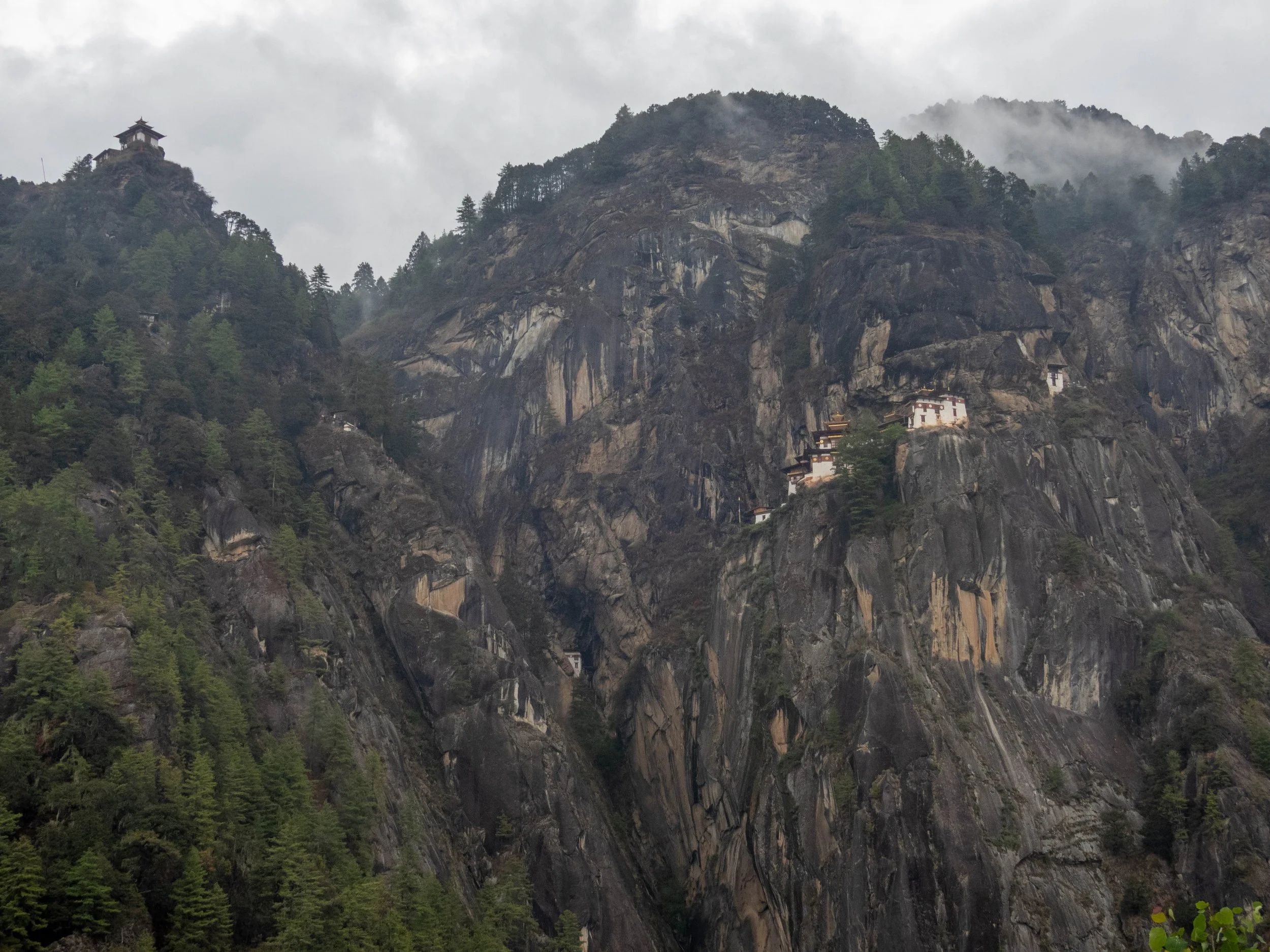It was to be an early start today as we had in front of us a five hour trek to the Taktshang Monastery frequently referred to as ‘Tiger’s Nest’. It is probably the most famous of all the Buddhist monasteries in Bhutan as it sits perched on the side of a massive cliff 900 m above the Paro River and township below.
It gained its name as supposedly Guru Rinpoche arrived at this high location on the back of a tigress and meditated at the tiny monastery that was built here in the 1600s.
The site has been recognised as a most sacred place since 1646 and is supposed to be visited by all Bhutanese at least once in their lifetime.
In April 1998 a fire severely damaged the main structure but now this Bhutanese jewel has been restored to its original splendour.
Our driver Tenzin dropped us off at the base of the mountain and although some people elected to use horses for transport we decided to do the hard slog and set off on foot.
We started in blue pine forest and passed several water powered prayer wheels and then as the track got steeper we entered areas with lots of deep red coloured flowering rhododendrons. There were masses of people making this ‘pilgrimage’ and many of them were Indians. The term ‘Indian file’ for our progress up the mountain was entirely appropriate.
Prayer wheels beside the track
Rhododendron
After just over one hour of climbing we reached a point where the Tiger’s Nest was visible in drifting mist but there was still a long way to climb.
After two hours we’d passed the Taktsang Café and thirty minutes later we reached a high point at around 3140 m where there was a stupa and we should now have been able to see the monastery if it had not been for the cloud.
As there was no alternative, we decided to continue on down into the deep valley between the lookout and the monastery which is only 150 m horizontally across the gorge.
Our first view of the Tiger's nest across the gully
The trail descends about 360 steps to a waterfall next to the ‘Snow Lion Cave’ and then we had the final ascent of 250 steps to reach the monastery. The climbing at above 3000 m becomes a little more difficult due to the (~10%) lower oxygen availability.
Waterfall next to the ‘Snow Lion Cave’
At the monastery we rested and took photos in a fairly misty atmosphere but were not permitted to enter inside as we didn’t have passes.
The Monastery
The return journey was better as the cloud was lifting and the sun was breaking through so we managed to get some clearer photos.
The Monastery from the view point, Tiger's Nest walk
Corinne & Jak with the Monastery across the gully
The downhill pathway return was pleasant as we were on our own for much of the time. We arrived back at the bus after 4 hours 20 minutes hiking, a distance of 8.87 km with the ascent achieving a gain in altitude of 686 m.
Jak on the track
Corinne on the track
Monastery from the cafeteria
After another late lunch break we drove to the Drugyel Dzong fortress which was built in 1600 and then was gutted by fire in 1648. It is now in the process of being rebuilt.
Drugyel Dzong
In the 17th century this fortress played a major role in deterring the invading Tibetan warriors who crossed the mountain pass just behind Drugyel Dzong.
We could see the snowy dome of Chomolhari (“goddess mountain”).
Snow on Chomolhari (“goddess mountain”)
As our final activity for Bhutan, we visited an archery group and watched with amazement as archers fired arrows over a 140 m path to a fairly small target. Several hit the target and most were quite close. The bows were home made from two pieces of springy timber bound together with string and tape.
Lamgong archery ground
This has been our final day in Bhutan and it entailed the challenging hike which we coped with pretty well. On the day we were probably the oldest couple who did the whole trek which resulted in a number of complimentary comments from other younger hikers.
Tomorrow we leave Bhutan and move on to India where we can expect much hotter temperatures.
We’ve loved our time in Bhutan and feel very fortunate to now have some better understanding and appreciation for this remarkable jewel of Asia.













